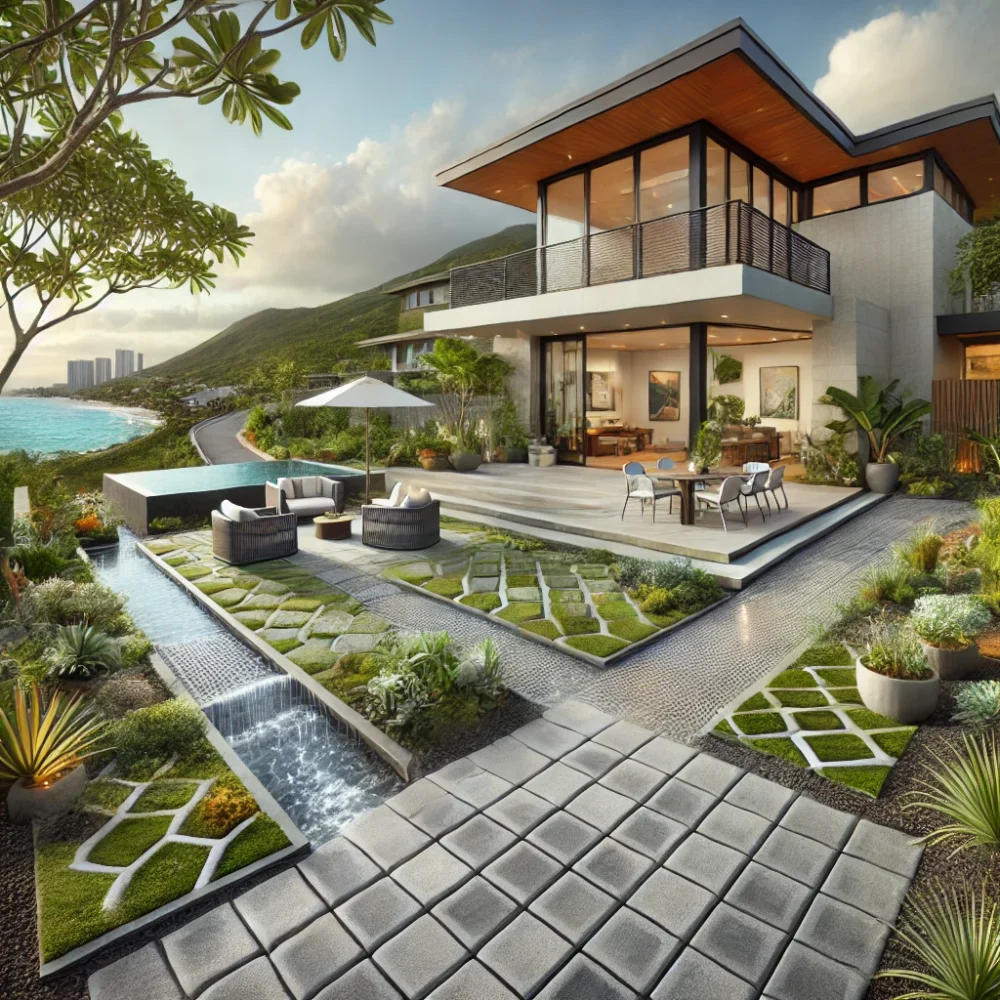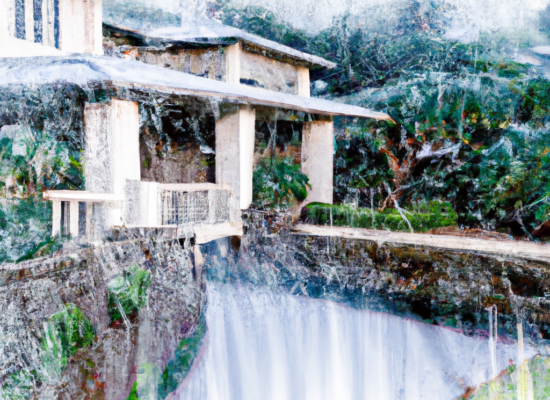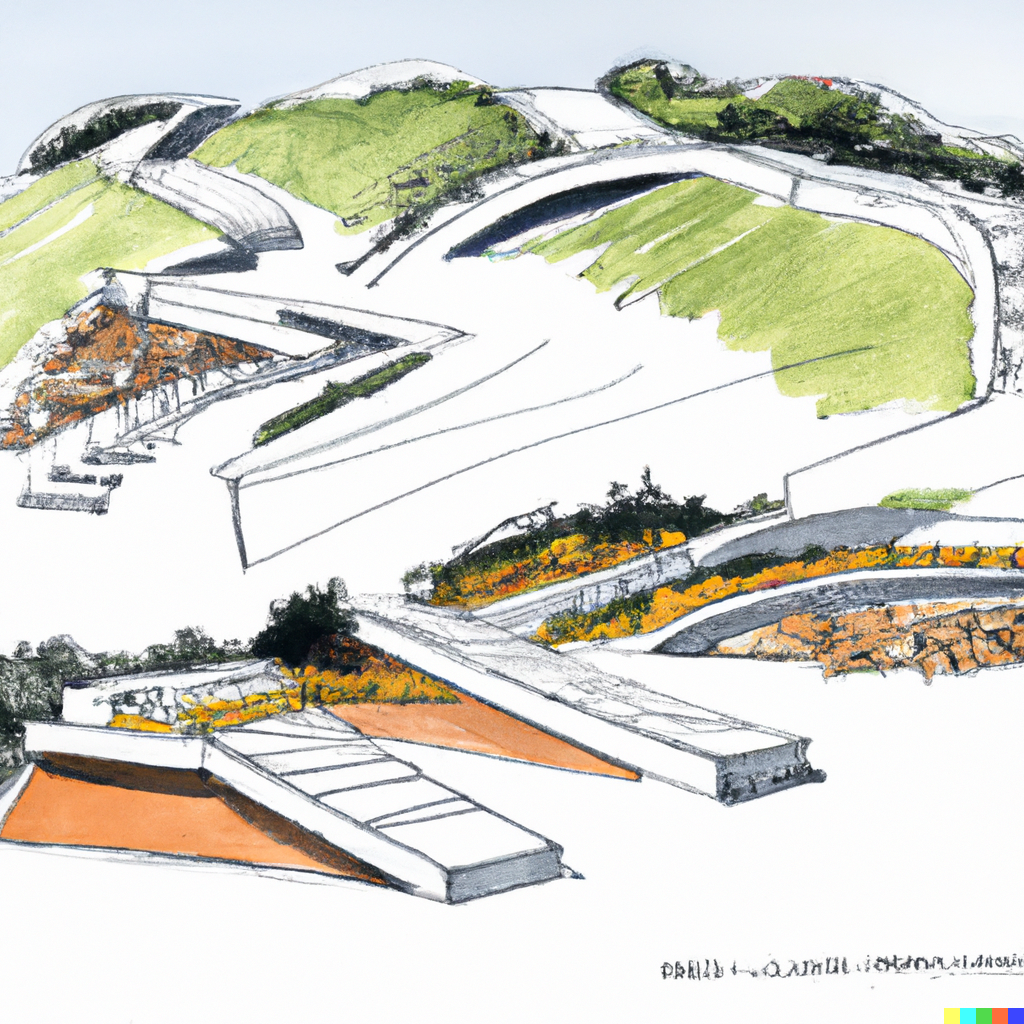Understanding Permeable Hardscapes
Permeable hardscapes refer to surfaces that allow water to pass through them, reducing surface runoff and promoting groundwater recharge. These surfaces are designed using materials like pervious concrete, porous asphalt, interlocking paver blocks, reinforced turf, and gravel-filled grids. In urban environments like Honolulu, permeable hardscapes play a crucial role in mitigating the negative effects of impervious surfaces, such as increased flooding, water pollution, and urban heat island effects.
Honolulu’s landscape is unique due to its island ecosystem, making stormwater management particularly critical. Traditional concrete and asphalt surfaces contribute to stormwater runoff that can overwhelm drainage systems, erode land, and transport pollutants into the ocean. Permeable hardscapes help counteract these effects by allowing water to filter naturally into the ground, reducing dependency on storm drainage infrastructure and promoting a healthier ecosystem.
Environmental and Functional Benefits of Permeable Hardscapes
1. Effective Stormwater Management
By allowing water to infiltrate rather than run off, permeable surfaces reduce the burden on municipal stormwater systems, particularly in regions with heavy rainfall like Honolulu. This mitigates the risk of flooding, soil erosion, and the accumulation of standing water, which can contribute to mosquito breeding and infrastructure damage.
2. Pollution Control & Water Quality Improvement
Runoff from impervious surfaces carries pollutants such as oil, heavy metals, and pesticides into nearby streams and oceans. By enabling water infiltration, permeable hardscapes act as natural filters, trapping contaminants before they reach larger water bodies, ultimately improving water quality and preserving Honolulu’s marine ecosystems.
3. Groundwater Recharge & Sustainable Water Cycles
Permeable hardscapes facilitate groundwater recharge by allowing water to percolate into underground aquifers. In an island setting where freshwater resources are limited, replenishing groundwater is essential for sustainable water use. By increasing infiltration rates, permeable hardscapes contribute to long-term water availability, particularly in times of drought.
4. Heat Reduction & Urban Cooling
Traditional impervious surfaces absorb and retain heat, contributing to the urban heat island effect. Permeable hardscapes, especially those with light-colored materials or vegetation, help mitigate heat retention and provide a cooler environment, reducing energy consumption for cooling.
5. Compliance with Honolulu’s Impervious Surface Area (ISA) Regulations
Honolulu regulations limit the impervious surface area of residential properties to a maximum of 75% of the total lot area. This ensures that developments include sufficient permeable surfaces to manage stormwater effectively.
To calculate the ISA for a property:
- Identify Impervious Areas: Measure all impervious surfaces on the property, such as driveways, patios, and walkways.
- Determine Total Lot Area: Calculate the total property size.
- Compute ISA Percentage: Divide the total impervious area by the total lot area and multiply by 100 to get the percentage.
If a property exceeds the 75% limit and the owner wishes to build an addition, they must either remove impervious surfaces or implement stormwater mitigation measures, such as installing permeable hardscapes or a stormwater retention system, to gain approval from the Department of Planning and Permitting (DPP).
Regulatory Requirements & Residential Storm Water Management Plan (RSWMP)
As part of the permitting process, property owners must submit a Residential Storm Water Management Plan (RSWMP), outlining strategies for controlling stormwater runoff. The plan should detail:
- The property’s total impervious surface area
- Mitigation strategies such as rain gardens, permeable driveways, and retention basins
- Compliance measures with local regulations
The City and County of Honolulu provide a standardized RSWMP template to help applicants prepare their submissions.
Additional Sustainable Landscaping Options
Beyond permeable hardscapes, additional green infrastructure solutions enhance sustainability and stormwater management. These include:
1. Rain Gardens
Rain gardens are shallow, vegetated basins designed to capture and filter stormwater runoff. Typically planted with deep-rooted native plants, they absorb rainwater from roofs, driveways, and walkways, reducing runoff and improving water quality.
2. Bioswales
Bioswales are landscaped drainage channels that slow, collect, and filter runoff before it reaches storm drains. They are commonly implemented along streets, driveways, and parking areas, helping to prevent erosion while improving water infiltration.
3. Permeable Pavement Pathways
Adding permeable pathways throughout a landscape improves walkability while allowing water to seep into the ground. This is an excellent alternative to traditional concrete walkways.
4. Xeriscaping
Xeriscaping is a water-efficient landscaping approach that uses drought-resistant plants, minimal irrigation, and strategic hardscaping to create low-maintenance, sustainable yards. This method is particularly valuable in Honolulu’s dry regions.
5. Living Walls & Vertical Gardens
Incorporating living walls or vertical gardens on residential properties provides insulation benefits, absorbs rainwater, and enhances aesthetic appeal while promoting biodiversity.
6. Native Plant Landscaping
Using native Hawaiian plants minimizes water usage, eliminates the need for chemical fertilizers, and supports local wildlife. Plants such as ʻākia, ʻōhiʻa lehua, and pōhinahina are well-adapted to the local climate and enhance ecological resilience.
Conclusion
Incorporating permeable hardscapes and sustainable landscaping techniques into residential design is essential for effective stormwater management, environmental protection, and regulatory compliance in Honolulu. By replacing traditional impervious surfaces with permeable alternatives and integrating conservation landscaping, homeowners can create functional, visually appealing, and eco-friendly outdoor spaces that contribute to a healthier urban environment.
Sources
- Alliance for the Chesapeake Bay, Glossary of Stormwater Terms
Impervious Surface Definition - Alliance for the Chesapeake Bay, Conservation Landscaping
Conservation Landscaping Practices - City & County of Honolulu, RSWMP Template
Residential Storm Water Management Plan
Word Count: TBD



